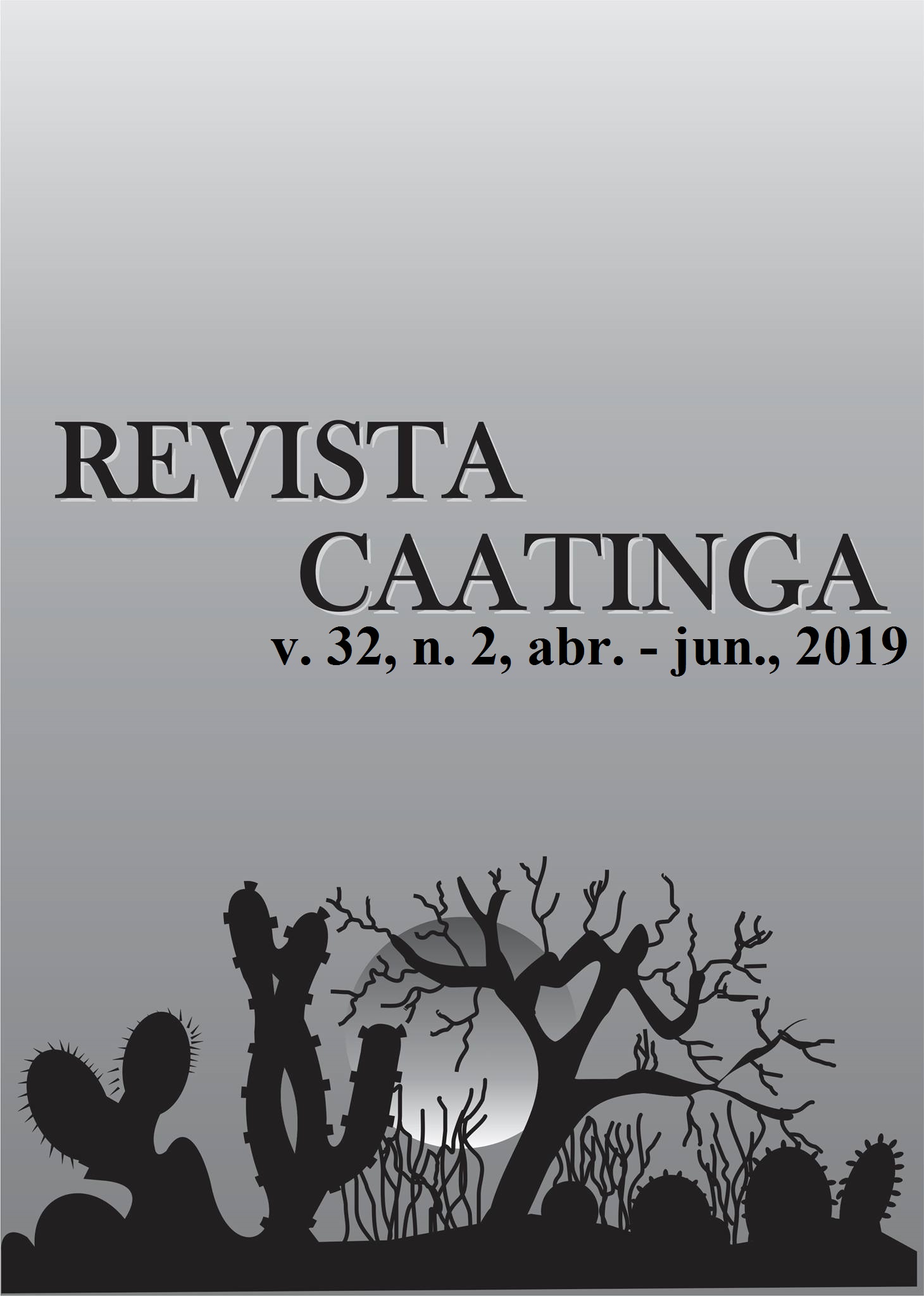PHENOLOGY OF Calotropis procera (Ait.) W.T. Aiton ACCESSIONS BASED ON MORPHOPHYSIOLOGICAL CHARACTERISTICS
DOI:
https://doi.org/10.1590/1983-21252019v32n227rcKeywords:
Silk blossom. Reproductive system. Vegetative growth.Abstract
The objective of this work was to evaluate the phenology of Calotropis procera accessions based on morphophysiological characteristics. Seeds of 70 C. procera accessions were collected between October 2015 and January 2016 in areas where the species naturally occurs in Northeastern Brazil. These accessions make up the current germplasm collection of the National Institute of the Semi-arid (INSA). The experiment was conducted in a greenhouse at INSA, in Campina Grande - PB, from January to September in 2016. The plants were cultivated in plastic pots filled with soil. Fertilization was conducted according to soil analysis recommendations and plants were irrigated at a 3-day interval. Morphophysiological characteristics were recorded 30 days after sowing (DAS) and 30-day intercalated evaluations were conducted up to 240 DAS. In addition, physiological indexes were estimated and leaf fall, flowering, and fruiting were evaluated at 120 DAS. Mean of each characteristic was obtained using the adjustment and the selection of regression models to explain the growth of C. procera based on the coefficient of determination. The vegetative stage of C. procera occurs during the 240 DAS, with continuous fall and production of leaves, while the reproductive stage begins at 153 DAS, continuing until 222 DAS, depending on the accession, making emission of inflorescences constant on plants after the beginning of flowering. The physiological indexes are efficient to estimate the growth of C. procera accessions.
Downloads
Downloads
Published
Issue
Section
License
Os Autores que publicam na Revista Caatinga concordam com os seguintes termos:
a) Os Autores mantêm os direitos autorais e concedem à revista o direito de primeira publicação, com o trabalho simultaneamente licenciado sob a Licença Creative Commons do tipo atribuição CC-BY, para todo o conteúdo do periódico, exceto onde estiver identificado, que permite o compartilhamento do trabalho com reconhecimento da autoria e publicação inicial nesta revista, sem fins comerciais.
b) Os Autores têm autorização para distribuição não-exclusiva da versão do trabalho publicada nesta revista (ex.: publicar em repositório institucional ou como capítulo de livro), com reconhecimento de autoria e publicação inicial nesta revista.
c) Os Autores têm permissão e são estimulados a publicar e distribuir seu trabalho online (ex.: em repositórios institucionais ou na sua página pessoal) a qualquer ponto antes ou durante o processo editorial, já que isso pode gerar alterações produtivas, bem como aumentar o impacto e a citação do trabalho publicado (Veja O Efeito do Acesso Livre).







